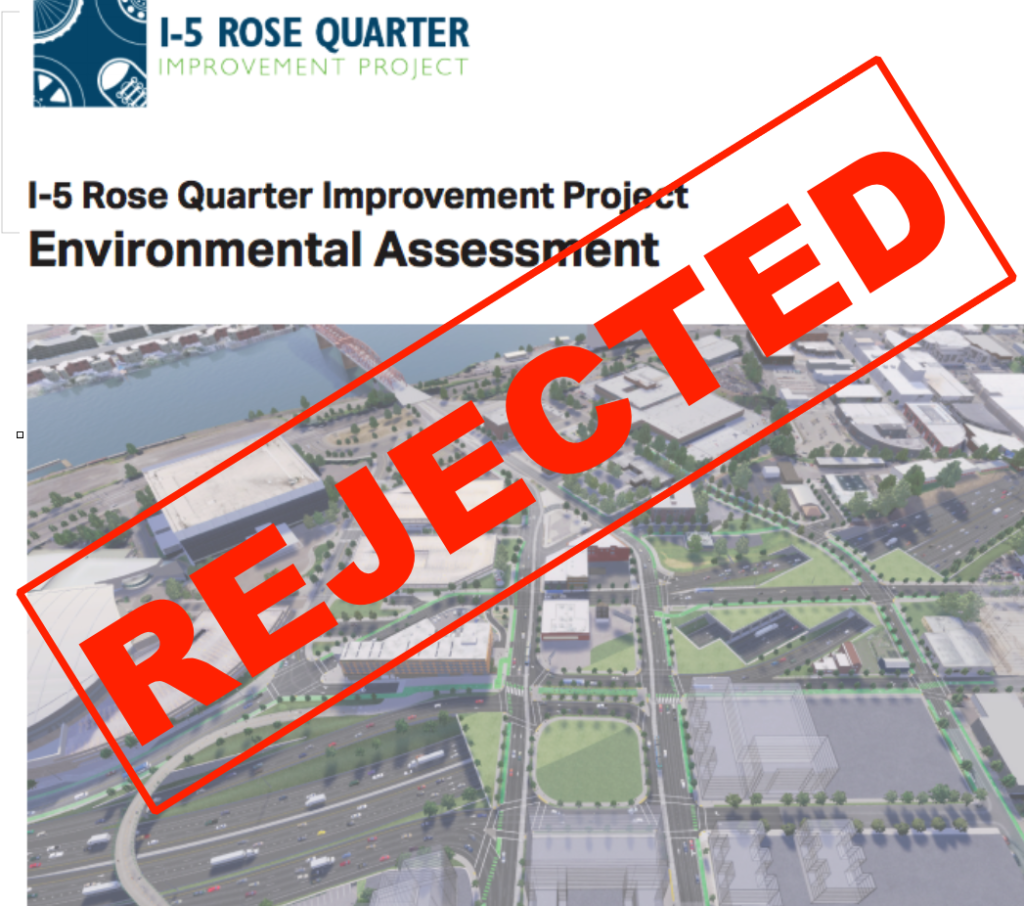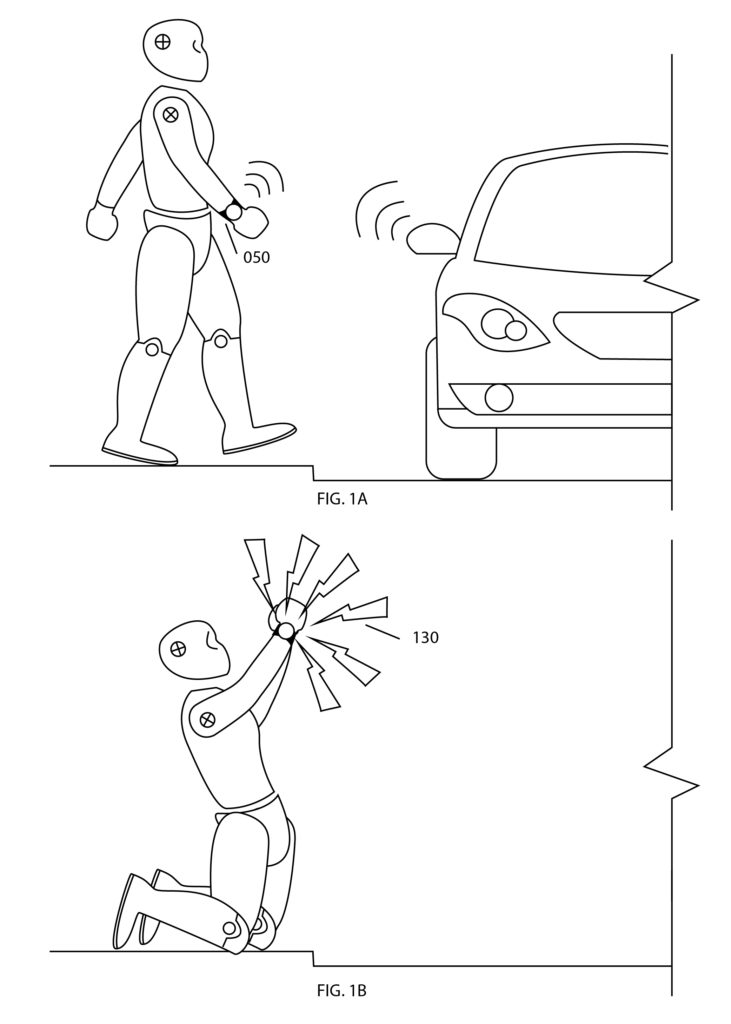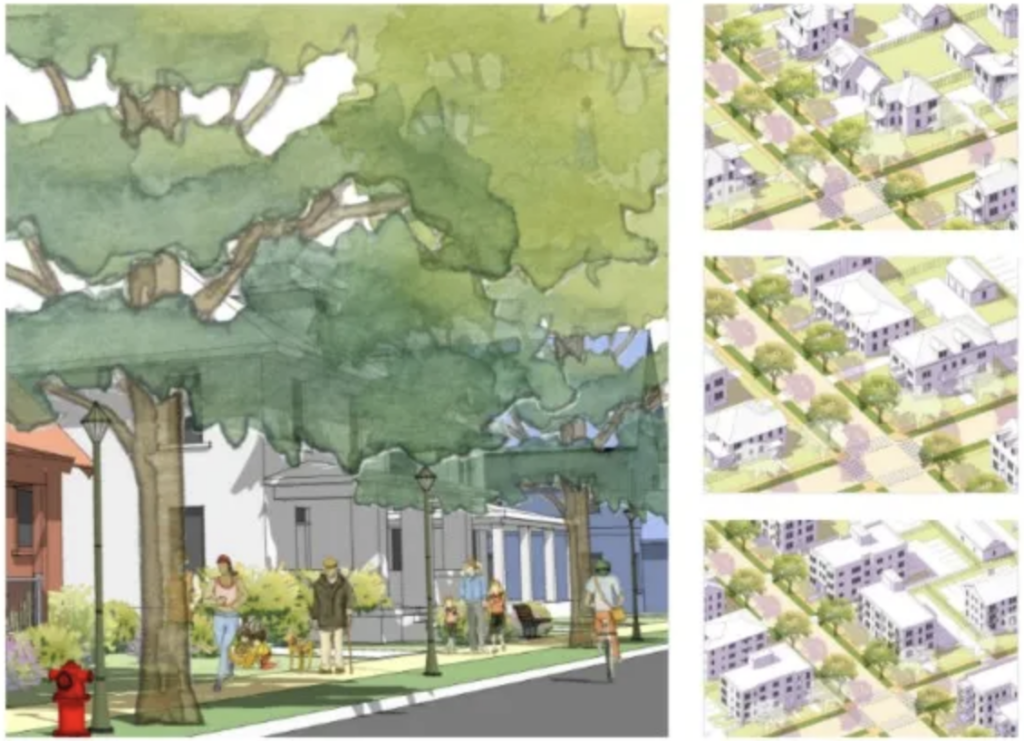What City Observatory did this week
Rose Quarter tolls: Available, but not foreseeable? There’s a glaring–and illegal–contradiction in the planning for the Oregon Department of Transportation’s $1.45 billion Rose Quarter project. While ODOT’s financial plan claims that needed funds for the project will come from tolling I-5, the project’s environmental analysis claims that there’s no need to consider the effect of tolling on traffic or the environment, because tolling isn’t “reasonably foreseeable.”
- Tolls can’t be both “available” and “not reasonably foreseeable.
- Tolling would eliminate the need to widen the I-5 freeway.
- Without tolls, ODOT can’t pay for the $1.45 billion Rose Quarter project.
- FHWA can’t approve the Rose Quarter project because of these errors and contradictions.
No technical fix for road safety. It’s tempting—but wrong—to assume that the growing death rate on the nation’s roads can be solved with another dose of technology. A viral video showing a self-driving car blowing through an occupied crosswalk shows autonomous vehicles can be just as indifferent to humans on foot as human drivers. And at the same time, university researchers are flogging a phone app as a cure for the supposed problem of “distracted pedestrians.” There’s no shortage of silly ideas as to how technology could be applied to this problem—we have a few ourselves. But the point is that technology is a diversion, rather than a solution.
The belief that just one more technological advance will reduce road carnage is wrong, and it illustrates our obsession with gizmos, and the car-blindedness that has relentlessly shifts blame and responsibility to vulnerable road users.
Must Read
Cars are getting older. Axios reports new data show that the average age of a car or truck in the United States is now 12 and a half years, the longest ever recorded. That matters because climate policies are counting on people replacing their internal combustion engines with electric vehicles. But as people hold on to fossil fueled vehicles longer, we make slower progress toward reducing greenhouse gases.
The transition from gas to electric cars will take decades. It’ll likely take until at least 2050 — and possibly longer — before most gas-powered cars are off the road, [S&P Global Mobility researcher Todd] Campau says.
The report also shows that, so far, electric ars are less durable that their internal combustion counterparts. about x.x % of the EVs sold in the last decade have been scrapped compared with about x.y percent of internal combustion vehicles. The shorter average lifespan of EVs means it will take longer for EVs to replace internal combustion vehicles.
Time for a national “roads review.” The Frontier Group’s Tony Dutzik says its time to take a considered national look at our highway transportation system. We really don’t have a national transportation plan: what we have is a series of state level plans (mostly to expand highways), coupled to a generous and indiscriminate federal firehose of funding. When aded up, over the next several decades, does our spending on hundreds of billions on roads take us in the direction of meeting our climate and safety goals?
A similar “roads review” in Wales reached the conclusion that the status quo ante of incrementally expanding the road system was fundamentally out of step with the national interest, both for economic and environmental reasons.
Dutzik argues that the transportation fraternity is incapable of reforming itself (as evidenced by a 2019 report published by the Transportation Research Board) and that what we need is a broad-based “people’s roads review” that integrates the diverse critiques of our current car-centric system from urbanists, public health experts, displaced communities, climate change advocates, and fiscal experts. As he says:
The climate crisis and the safety crisis on our roads – together with the countless other big and small problems driven by our continued emphasis on cars and road-building – demand something bigger than what transportation advocacy has yet been able to deliver. We need a rallying point that knits small movements into a bigger one, that enables the whole to become greater than the sum of the parts, and that provides the public, the media and decision-makers with a common focal point for education, engagement and action.
The Devilish Details of Missing Middle Housing. Many states are making progress in ending the hegemony of single family zoning, opening up residential zones for duplexes, triplexes and other missing middle housing. Washington State has recently passed HB 1110, which legalizes multiplex homes and accessory development units in most single family zones.
But as with many things in housing, the complex web of regulations and guidelines that shape what can be built mean that zoning is just one of many obstacles. Building codes, setbacks, height limits and other provisions can be equally daunting. Matt Hutchins looks at a new infill development manual from Washington State’s commerce department, which, in theory, is designed as a “how to” guide to promote missing middle housing, but in practice may turn out to squelch real change.
The publication is replete with gauzy watercolor illustrations of hypothetical missing middle developments. But if you look more closely at what’s being prescribed, especially in the proposed “overlay standards”, the guide does more to limit missing middle housing than to enable it:
The underlaying premise of these overlay development standards is to make middle housing as palatable to neighbors as possible (low densities, smaller footprints, bigger setbacks, lower heights) rather than embracing the challenge we face with the housing crisis and climate change. The standards do not match up with the reality of many neighborhoods (funky cul-de-sacs, small narrow and deep lots, parcels with buildings already on them). At its very worst, this toolkit will give slow-growth municipalities cover for downzoning by providing the option to select overlays that are less intense for the majority of their currently residentially zoned land.
The complex and interconnected web of regulations regarding housing all reflect and reinforce the dominance of exclusively single-family neighborhoods. Dismantling this structure will require considerable effort.
New Knowledge
Remote work, urban location and household formation. Adam Ozimek and Eric Carlson of the Economic Innovation Group have a new paper looking at how work from home has influenced housing demand. There are some glib assertions that the ability to work at a distance is leading to decentralization and the demise of cities, but this paper points out that the effects are much more nuanced.
While there has been some population movement to suburbs since the pandemic, a striking fact is that urban housing markets remain very robust–prices for centrally located apartments have surged in most cities.
The study shows that households that work from home tend to spend more on housing (rents or mortgage payments) than households that don’t work from home. That makes sense: If you’re working at home, you need more space to serve as your “office”—and likely are spending more on the amenity of your home, reflecting the increased amount of time you spend there. In addition, if you’re working at home, you’re most likely spending less on commuting, which gives you relatively more income to spend on housing.
This finding—higher housing expenditures by work at home households—holds from 2020, but the size of the effect appears attenuated in 2021 (the additional amount spent on housing by work at home households is smaller.). The author’s also find that work at home was associated with increased household formation—think of adult children moving out of the house, couples splitting up, roommates sharing a space moving to separate housing units, etc. Even though there was some population movement to suburbs, this increased household formation helped maintain robust housing demand in denser neighborhoods. As the authors conclude:
In general, exposure to remote work led to increases in housing demand as shown, for example, through gross monthly rental payments and home values. However, this effect was smaller for PUMAs with high population densities and expensive housing markets. Indeed, we find a negative effect of remote work exposure on population growth the most dense and expensive PUMAs, suggesting that working from home led to some level of out-migration from these areas. However, in these dense and expensive PUMAs, the positive effect on the household formation helped offset the population loss. In short, one reason places that lost population nevertheless saw robust housing markets was that they had stronger household formation.
Adam Ozimek, Eric Carlson, Economic Innovation Group, Remote Work and Household Formation, April 11, 2023
https://eig.org/wp-content/uploads/2023/04/Remote-Work-and-Household-Formation.pdf
In the News




